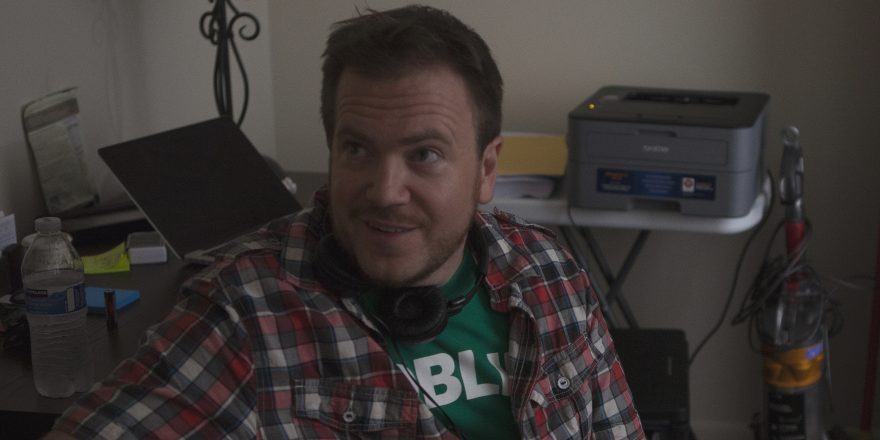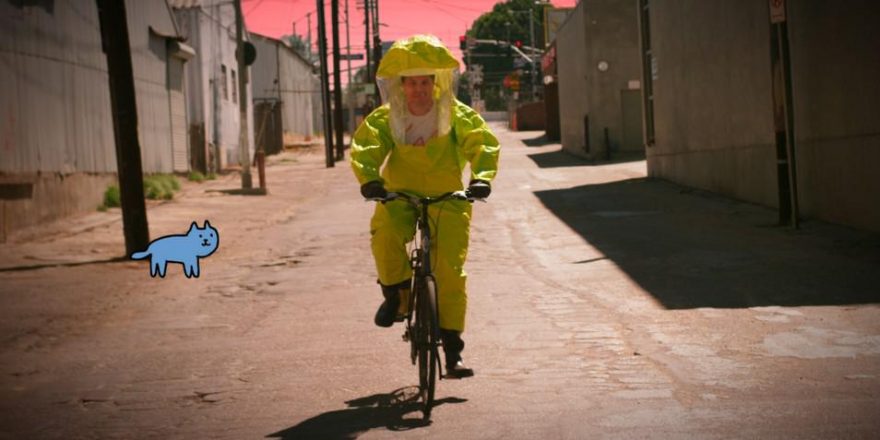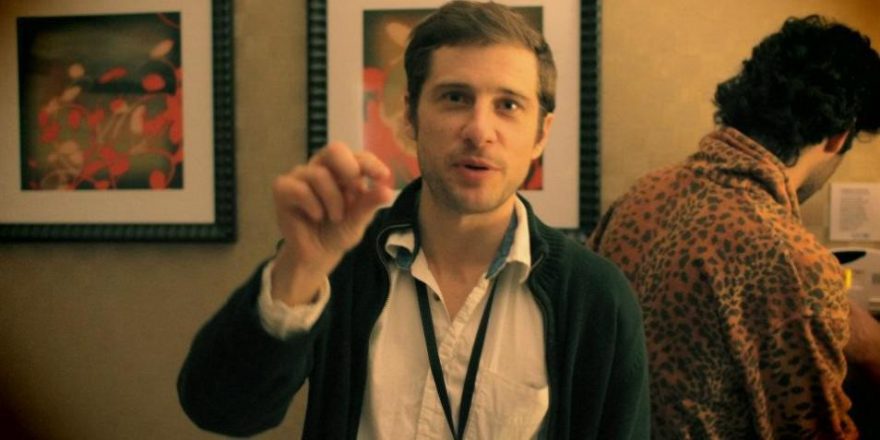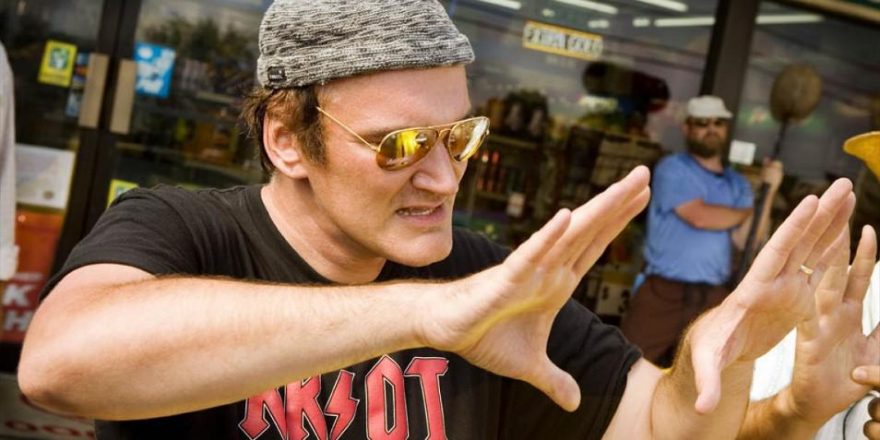When you’re done, you’re never done.
Perspective is everything. The grass is always greener. A bird in the hand. Yeah, yeah, OK, I’ll get to the point. When you somehow get your movie accepted by a major film festival, a “buyer’s fest” with a “strong industry presence,” you’ve automatically just leapfrogged over 99 percent of all the other movies created that particular year. So, on the surface at least, you made it! You finally arrived! Pop the fine champagne. Drink it. Drink all that fine champagne. Good. Are you drunk yet? You’ll want to get good and loaded before we move on, because once you enter the one percent club, everything instantly resets and you’re just a number again. Certainly a smaller and more finite number amidst a nominally more elite group, but a number just the same.
I made a short called My Mom Smokes Weed for about 400 bucks, and it got into Sundance. That was six years ago. Jesus, I was young and naïve. In my head, it was gonna be a total a gamechanger, as it came after I already made one low-budget feature (still expensive enough to put me in considerable debt) that didn’t get much in the way of accolades. I can’t explain how validating getting accepted into Sundance was. It felt like something I could immediately use to push my career in the right direction. If I’d had a boss, I would have been like, “Hey boss, guess what? I quit!” Thank heavens I didn’t have a boss. To be fair, the whole affair nabbed me an amazing manager who I’m still with, and I had some pretty stellar meetings. But after the festival, I went home pretty much the same as I arrived; minus the unbridled enthusiasm. Pumpkin time had arrived for this Cinderella. Of course, how much can you do with a short, really? That’s my Monday morning quarterback speaking.
Well, the following March, I premiered my second feature (my first, if you ask my representation – everyone always wants to pretend your embarrassing early works don’t exist) in competition at South by Southwest. Here was something I could really hang my hat on. Competition! And alongside some really great company, the likes of such rapidly rising stars as Lena Dunham herself! And we got a fair amount of press. Mixed-positive reviews too, because honestly, it’s my most uneven movie (Earthling, for anyone keeping score).
There’s a sort of hierarchy among film festivals. Domestically, the first tier is Toronto, Sundance, Telluride, Tribeca, SXSW. These are sales fests, in that buyers from most major distribution companies attend, often with fat wallets, looking for acquisitions. The second tier consists primarily of regional fests, which traditionally don’t have a strong sales presence, but they’re perfect platforms to identify and engage your audience, especially if you haven’t yet had a film in a first-tier fest (the discovery of your voice and who responds to it is pivotal) and they’re also great places to see some amazing films (because you often have to fight tooth and nail to just get a seat at Sundance). Just to be clear, this tiering is not about quality, it’s about how fests may or may not effect the life of your film.
So, you’re past your premiere. Perhaps it was at a buyer-attended fest, perhaps not. And anyway, only a fraction of participating movies actually sell at first-tier fests. That may seem off, but realize the films that sell are the only ones you read about in the trades. Nobody reports on films not selling (at least not until the end-of-year round-up of undistributed films deserving of release). It took nearly six months to sell Earthling after SXSW. So assuming you’re part of the larger group of unsold movies, what’s next? There’s a very good chance you at least were presented with an “offer” or two. Offers are strange animals. They may come from large, familiar distributors or smaller ones you’ve never heard of.
It’s hell out there, simultaneously the best and worst time to be an indie filmmaker.Offers can come with money attached (an “advance” or “MG,” meaning minimum guarantee) or as straight back-end deals, which are becoming far more commonplace these days. A back-end deal means you get paid a percentage of the movie’s net profits, once any costs against the movie from the distributor – such as for advertising or the production of deliverables (foreign dialogue lists, closed captioning files, etc.) – are paid off. This means you’ll likely see little to no money once your movie is in active distribution. Earthling was sold under a no-MG, backend-only deal. It went on to become one of the most successful indie films in Hulu’s history (yeah, I know, it’s Hulu). I saw reports that showed insane earnings, but I probably have only seen a couple of thousand bucks since 2011. So it’s not that the film wasn’t profitable, it’s that I wasn’t really a participant in the money it was earning. You should always take an advance and be happy with that advance — because it likely will be the only money you ever see.
So what if you’re not offered an advance, and the back-end you’re getting from potential distributors is clearly not in your favor, percentage-wise? Or, let’s even take it a step further and presume you didn’t get a single realistic offer at all. What then? There was certainly a time when that was basically game over. Blammo! All DVD copies of your movie suddenly just mutated into really expensive drink coasters. But that was before the Internet. And before the term “self-distribution” was seen as anything other than a pejorative. It’s the Wild West right now. Times are pretty exciting, save for the fact that nobody, including (and especially) many distributors, really knows what’s going on.
There’s a ton of signal-to-noise out there. Cheaper means of production has led to a glut of movies being made every year, many professional-looking enough to enjoy some sort of distribution. You need to stand out from the glut. Social media is key. You should be acquiring followers before you even go into production. This is your army. And the numbers of followers on Facebook, Twitter, Instagram and the like make a tangible difference to buyers. It shows a microcosm of your potential audience, and therefore a good indication of how much money you stand to make. With my latest feature, Slash, we began our social media campaign back when we were still casting the movie. Plus, the feature began as a somewhat successful short, so I was able to migrate those fans over to the feature.
The notion of self-distribution may paint an erroneous picture of you behind a banana stand with a stack of DVD’s and some hand-printed price sign. Let me reassure you this is not (necessarily) the case. Most filmmakers, present company included, are terrible business people. I wouldn’t even begin to know where to start when it comes to direct sales, VOD or, God forbid, theatrical. But there are companies you can hire to handle such tasks for you. There’s really no stigma to service deals anymore and there are now great people in the for-hire theatrical booking arena. If you can’t afford that, though, there also companies such as Tugg which use a crowd-funding model to pre-sell tickets to participating theaters. Beyond that, even previously maligned companies such as BitTorrent (yes, that BitTorrent) are actively helping filmmakers get their movies out there legitimately and even monetize them.
I hope you see that you have options and can get past the old prejudices against the self-distribution model. There are so many companies and even non-profit organizations willing to help. Your movie need not have actually played at Sundance for you to utilize their artist services, which can help you with theatrical and VOD connections. VOD is where you make the majority of your money, and because of this there are now gatekeepers between you and the big streaming platforms. It’s hard to parlay a direct sale to iTunes or Netflix, but aggregator companies are willing to help you, for a small percentage of the profits.
At the end of the day, it’s hell out there. It’s simultaneously the best and worst time to be an indie filmmaker. Movies are cheaper and easier to make, but this has led to an extreme glut of content clogging the marketplace. Even if you do get a decent traditional distribution deal, you’re going to have to do a ton of grassroots marketing to raise awareness for your release. Especially if you’re like me and make movies that don’t easily fit into one of the four or five pre-ordained “movie buckets” distributors like their movies to fit in. (I’m assuming so they can use marketing plans and projections they’ve built and rebuilt for years, not because they’re jerks with bad taste.) Hey, I’m a cross-genre guy. I don’t just make comedies. I make “Tweeners,” movies that are ‘tween a comedy and something else. It may sound cute, but trust me, it’s a pejorative. Thankfully there’s a counter to the tweener issue. Your film can honestly be about pretty much anything, as long as you can market it as something that fits within a single box. That’s the hat trick. It may be difficult, but it’s doable.
Though the golden days when huge festival distribution deals seemed commonplace are gone, we now have far more options to directly reach our target audiences than ever before. And think about that word, “target.” Really think about it. Because the Internet and social media specifically allows commoners like us to figure out who is engaging with us, and who we should be marketing to. And when you have very few dollars to spend in such areas, you want to make sure every spend is a smart, targeted spend. It’s easy to get scared. Like I said, it’s the Wild West. But if you mosey into town with a six-gun loaded with bullets made from social media followers and simple market research, you can rule the day and turn what would have at one time been considered a failure into a massive success.
When you do eventually see my latest film, either on VOD, or hopefully, in a crowded theater, you’ll know me and my team walked into our distribution deal with eyes wide open and a mind toward the business end of getting it done right. The modern landscape has made me into a lioness, and I’ll fight to protect my cinema cub. And this is coming from the most meek of all people. If I can do it, trust me, so can you.







